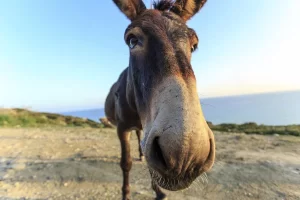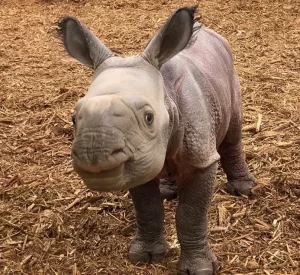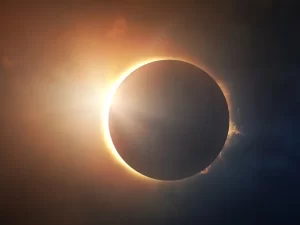DO I EVEN KNOW IF I’M NOT HERE NOW?
As we go through life things happen that stop the mind long enough for us to be fully present. Sometimes these moments are beautiful, as in the birth of a child, or a connection with nature that stills the mind. Other times they may be painful such as the passing of a close friend, or a break up with a loved one. In these moments our defenses are stripped away long enough for us to have an authentic connection to the moment. Usually, we will go right back to over thinking, analyzing or otherwise taking selfies with the moment.
 With meditation practice we are training to notice subtler and more ordinary moments that stop the mind. And perhaps more importantly, we learn to accept these authentic moments, as they are, without commentary for longer periods of time. This serves to infiltrate the wall of separation that we fabricate to keep ourselves isolated from life. You might say, we are turning the lights on to our life. If our mind is supple enough, we can see all life as alive and interactive. In time, we see ourselves as a part of everything rather than struggling to overcome anything. In popular culture, this is known as being one with everything. In Meditation traditions this is known as non-dual experience. Nondual experiences are instances of clear perception when we are directly connected to the moment as opposed to dualistic experiences when we are separated out and looking in.
With meditation practice we are training to notice subtler and more ordinary moments that stop the mind. And perhaps more importantly, we learn to accept these authentic moments, as they are, without commentary for longer periods of time. This serves to infiltrate the wall of separation that we fabricate to keep ourselves isolated from life. You might say, we are turning the lights on to our life. If our mind is supple enough, we can see all life as alive and interactive. In time, we see ourselves as a part of everything rather than struggling to overcome anything. In popular culture, this is known as being one with everything. In Meditation traditions this is known as non-dual experience. Nondual experiences are instances of clear perception when we are directly connected to the moment as opposed to dualistic experiences when we are separated out and looking in.
The problem with cultivating nondual experience is that once we recognize it, we almost immediately begin to mentally quantify and qualify. This is akin to having a moment of connection with a love partner and then having to protect our vulnerability with a joke or a relationship plan. I like to joke that most of my love relationships were threesomes. Me, my partner and my brain. It’s ironic that our overthinking brain, rather than leading us to an understanding, actually distances us from the experience. We come by this naturally, as the conceptual layer of thinking is not there to lead us to wisdom, but to protect us from it. We will imagine a break up in a vain attempt to protect ourselves from heartbreak. Naturally, this only encourages that eventuality.
In most cases this un-investigated, compulsive thinking is like a blanket of static that surrounds us, like Charles Schultz’s Pigpen from the comic Peanuts. Pigpen was always followed by rings of dust and confusion. My first memory of becoming consciously mindful came when I read Suzuki Roshi saying that cleaning my room could be a first step towards waking up in my life. I would turn on WBAI and listen to Gary Knoll and clean my room with as calm a mind as I was able. I was undoubtedly experiencing pure moments now and then. I was one with the broom as it swept across the hardwood. I was taken by the Zen fable of the monk who while raking the monastery lawn inadvertently hit a rock. He became enlightened the moment the rock struck a tree. It seems these nondual moments of pure perception may be the gateway to a state of perpetual stabilization of our mindfulness. Unfortunately, knowing this only makes the possibility more remote as any conceptual framing only separates us from the gateway. So, we begin with sweeping the floor of our room. Just that. And returning our attention to that. Eventually, I turned off the radio, and let the music of the silence surround me. BUt what I mist remember of those mornings was the sun streaming through my glass block windows creating magic prisms on the floor. The simple act of coming back to now and clearing away the debris opened me to a greater world.
Mindfulness practice is returning to the moment again and again. Each time we return we have the opportunity to become clearer and more efficient with the process until we are simply saying now. Now. Now. This is the moment we are looking for because this is the only moment there is right now. Here. Here. Here. It’s only tedious as the mind wonders what else it might be doing. Just like the lover analyzing each stroke, we lose our connection and become desynchronized and impatient. There are remedies for this. Recognizing we are straying or itching to stray, then lovingly returning to the life giving breath. And finally, releasing ourselves from commentary and resting in openness. In this way, we are reprogramming the mind away from needing to control life toward accepting the present moment just as it is. Whether coming back to the sweeping broom, or the rock hitting the tree mindfulness training will lead to peacefulness and a willingness to just be here with our lives.
Finally, and most alarmingly, that Pigpen cloud of random discursive thinking is not only separating us from direct connection to our life, it is also subconsciously programming us. We become used to avoidance as a strategy for protection. This only makes us more frightened. Our mind instinctively knows when it’s being fooled and coddled into complacency. Avoidance only works with superficial experience. But deep inside, where our anxiety lives, we know not paying attention leaves us vulnerable and unprotected. Avoidance only serves to make us more avoidant and more frightened as we are living in the dark. Also, as the bard said, “in this sleep of death what dreams may come? Aye, there’s the rub.” What are we telling ourselves as we sleepwalk through life? Are we supporting a toxic psychology that keeps us imprisoned in doubt and confusion? Are we randomly imagining catastrophes hence hastening their eventuality? Billie Eilish had a record called “Where Do We Go When We’re Asleep?”. It’s a very good question. What are we doing when we’re not paying attention? It is said, we are always generating something. When we are awake, we are generating further wakefulness. But, when we are asleep? What are we doing?
So, cutting through the dualistic barrier is like cracking a wall so light can penetrate, even a ray at a time. Each time we come back to the present we let a little light in. Our work then is to let that be. Not to stomp all over the light. It’s as if we draw the curtain to allow the light in, and then cover the window back up so the light doesn’t get out. That doesn’t work. But what we can do is develop two steps of recognition and return and add release to that. Just notice and let go. The grand canyon is beautiful. Notice, retun, release. My heart is broken. Notice, return, release. In this way, in time, we turn the lights on and with the light on.
WIth the lights on, we have the power to decide our intention. Which is to say, we know what we are doing.
__________




 In conventional life, we assume we should push harder. And when that doesn’t work, we assign blame, usually to ourselves. I’m lazy. I’m useless. What’s wrong with me? We might take on the role of a frustrated parent yelling outside the door, “GET UP!” or a sports coach urging,. “Get past this and move it, you baby.” But if we actually were a baby, no one would speak to us that way. In fact, we might find it cute when a toddler in their terrible twos holds their breath. And while some foxhole instances require tough love or aggression to provide the motivation we lack in most cases this is an overplayed lazy option. It is not a recommended approach to guiding a child toward self-sufficiency, nor developing a meditation practice that includes our full being. You see, we so-called adults have grown beyond the children we once were, but the children have nonetheless remained. We can take the approach of ignoring our child, as many of our parents did. And as we grew, some of us learned to ignore the pleading of what the Indigo Girls referred to as our “Kid Fears”. Unfortunately, this approach met with enough success that “grin and bear it” became the order of the day and some pushed through until the seed of doubt grew into a boulder we could not lift.
In conventional life, we assume we should push harder. And when that doesn’t work, we assign blame, usually to ourselves. I’m lazy. I’m useless. What’s wrong with me? We might take on the role of a frustrated parent yelling outside the door, “GET UP!” or a sports coach urging,. “Get past this and move it, you baby.” But if we actually were a baby, no one would speak to us that way. In fact, we might find it cute when a toddler in their terrible twos holds their breath. And while some foxhole instances require tough love or aggression to provide the motivation we lack in most cases this is an overplayed lazy option. It is not a recommended approach to guiding a child toward self-sufficiency, nor developing a meditation practice that includes our full being. You see, we so-called adults have grown beyond the children we once were, but the children have nonetheless remained. We can take the approach of ignoring our child, as many of our parents did. And as we grew, some of us learned to ignore the pleading of what the Indigo Girls referred to as our “Kid Fears”. Unfortunately, this approach met with enough success that “grin and bear it” became the order of the day and some pushed through until the seed of doubt grew into a boulder we could not lift. Developing a strong meditation practice is one of the cases for which kindness is an essential method. Some of us learn this in meditation and the approach begins to bleed into other aspects of our life. In my opinion, this is the most important result of a consistent and authentic meditation practice. But, as wonderful as this sounds, some days we just can’t make that long journey from bed to the cushion. Yet, pushing ourselves in the way we do everything else, sets us off on the wrong tact. We are at the mercy of ego or self-will. It is the wrong view, because we are somehow believing there is something we can get from the meditation that requires struggle. The adage “nothing good comes without struggle” is not apt in developing an authentic practice free of aggression. So, when experience resistance to our practice it makes a certain sense. We are deconstructing the fortress of ego. We feel exposed and fearful. Sometimes we may need to halt the process and allow the fear to catch up with us. And kindness and patience are the remedies. When we have the patience to meet resistance with kindness in meditation practice, we have an opportunity to see its effectiveness. As we develop faith in love as a remedy we become kinder and more patient with ourselves. As we become kinder and more patient with ourselves, we naturally become more caring of others.
Developing a strong meditation practice is one of the cases for which kindness is an essential method. Some of us learn this in meditation and the approach begins to bleed into other aspects of our life. In my opinion, this is the most important result of a consistent and authentic meditation practice. But, as wonderful as this sounds, some days we just can’t make that long journey from bed to the cushion. Yet, pushing ourselves in the way we do everything else, sets us off on the wrong tact. We are at the mercy of ego or self-will. It is the wrong view, because we are somehow believing there is something we can get from the meditation that requires struggle. The adage “nothing good comes without struggle” is not apt in developing an authentic practice free of aggression. So, when experience resistance to our practice it makes a certain sense. We are deconstructing the fortress of ego. We feel exposed and fearful. Sometimes we may need to halt the process and allow the fear to catch up with us. And kindness and patience are the remedies. When we have the patience to meet resistance with kindness in meditation practice, we have an opportunity to see its effectiveness. As we develop faith in love as a remedy we become kinder and more patient with ourselves. As we become kinder and more patient with ourselves, we naturally become more caring of others. and is ready to step forward. In this way, we our full mind can develop natural assertion and confidence just like a child learning to walk back to their room. Just like flowers blooming in spring. The seed has no idea of the flower it will become as it is too busy pushing up through the darkness. This is not easy, but the plant does this without struggle. It rises because it is its nature. No one needs to stand above it yelling for it to grow. Along the way, if the ground freezes, the growing stops until the stalk gathers the energy to move again. We can see progress in nature that, while not without challenge, is in synchronicity with nature. The ancient book of wisdom, referred to as the IChing, states that obstacles can be overcome by emulating water. Warrior has the patience to pause until their strength rebuilds and allows them to flow over or around the obstacle. The river never feels insecure or berates itself for this.
and is ready to step forward. In this way, we our full mind can develop natural assertion and confidence just like a child learning to walk back to their room. Just like flowers blooming in spring. The seed has no idea of the flower it will become as it is too busy pushing up through the darkness. This is not easy, but the plant does this without struggle. It rises because it is its nature. No one needs to stand above it yelling for it to grow. Along the way, if the ground freezes, the growing stops until the stalk gathers the energy to move again. We can see progress in nature that, while not without challenge, is in synchronicity with nature. The ancient book of wisdom, referred to as the IChing, states that obstacles can be overcome by emulating water. Warrior has the patience to pause until their strength rebuilds and allows them to flow over or around the obstacle. The river never feels insecure or berates itself for this.
 In meditation theory, the sun is used as a depiction of awareness. The sun shines on everything equally regardless of whether it is blocked by the moon, the clouds or the turning earth. Awareness is alive and awake in the universe whether or not we are conscious of it. It is the work of the meditator to uncover the veils of self-imposed obscuration that block access to awareness. We notice thoughts that are actually quite small in the scheme, and bring our attention back to the space afforded by the breath. As we do this, we are stepping back from the thought and revealing a larger context. Our blockage might appear less significant, even humorous. Over time, these obscurations become less solid and less imbued with “meaning”. They become right-sized. Sometimes they disappear altogether. Although the significant obscurations require less force, but more patience. Some will likely return. When that happens we are faced with the same task. Notice them as thinking, and return to the breath. This reconnects us to space, which is perspective. It sucks that we often have to be fooled again and again but that is the work of creating access to awareness. That sunlight will, in time, permeate our experience, but there is a lot of slogging to get there.
In meditation theory, the sun is used as a depiction of awareness. The sun shines on everything equally regardless of whether it is blocked by the moon, the clouds or the turning earth. Awareness is alive and awake in the universe whether or not we are conscious of it. It is the work of the meditator to uncover the veils of self-imposed obscuration that block access to awareness. We notice thoughts that are actually quite small in the scheme, and bring our attention back to the space afforded by the breath. As we do this, we are stepping back from the thought and revealing a larger context. Our blockage might appear less significant, even humorous. Over time, these obscurations become less solid and less imbued with “meaning”. They become right-sized. Sometimes they disappear altogether. Although the significant obscurations require less force, but more patience. Some will likely return. When that happens we are faced with the same task. Notice them as thinking, and return to the breath. This reconnects us to space, which is perspective. It sucks that we often have to be fooled again and again but that is the work of creating access to awareness. That sunlight will, in time, permeate our experience, but there is a lot of slogging to get there.
